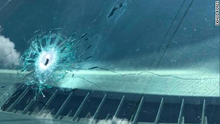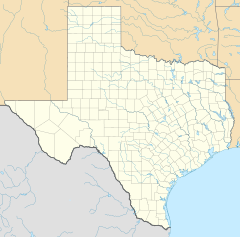A school shooting is an armed attack at an educational institution, such as a primary school, secondary school, high school or university, involving the use of a firearm. Many school shootings are also categorized as mass shootings due to multiple casualties. The phenomenon is most widespread in the United States, which has the highest number of school-related shootings, although school shootings have taken place elsewhere in the world.
In the early morning hours of December 9, 2007, 24-year-old Matthew John Murray opened fire at the Youth With A Mission training center in Arvada, Colorado, killing two and wounding two others before escaping. Later that afternoon, he attacked the New Life Church in Colorado Springs, Colorado, with a number of firearms, killing two more people and injuring three before being shot by Jeanne Assam, a member of the church's safety team. Murray then committed suicide by shooting himself in the head.

On March 10, 2009, Michael Kenneth McLendon, 28, fatally shot ten people and wounded six others between the communities of Kinston, Samson, and Geneva, Alabama. McLendon's shooting spree was the deadliest mass shooting in Alabama's history.

On June 7, 2013, a killing spree by a lone shooter occurred in Santa Monica, California. Its catalyst was a domestic dispute and subsequent fire at a home, followed by a series of shootings near and on the Santa Monica College campus. Six people were killed, including the suspect, and four injured. The shooter — 23-year-old John Zawahri — was killed by police officers when he exchanged gunfire with them at the Santa Monica College library.
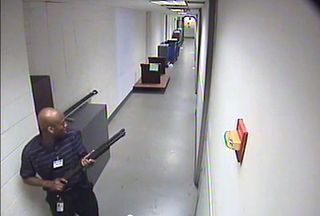
The Washington Navy Yard shooting occurred on September 16, 2013, when 34-year-old Aaron Alexis fatally shot 12 people and injured three others in a mass shooting at the headquarters of the Naval Sea Systems Command (NAVSEA) inside the Washington Navy Yard in southeast Washington, D.C. The attack took place in the Navy Yard's Building 197; it began around 8:16 a.m. EDT and ended when police killed Alexis around 9:25 a.m. It was the second-deadliest mass murder on a U.S. military base, behind the 2009 Fort Hood shooting.
The 2015 Sejong and Hwaseong shootings were two separate shooting incidents that occurred in South Korea on 25 and 27 February 2015 in the cities of Sejong and Hwaseong, respectively. After each shooting, the gunmen committed suicide.

Mass shootings are incidents involving multiple victims of firearm-related violence. Definitions vary, with no single, broadly accepted definition. One definition is an act of public firearm violence—excluding gang killings, domestic violence, or terrorist acts sponsored by an organization—in which a shooter kills at least four victims. Using this definition, one study found that nearly one-third of the world's public mass shootings between 1966 and 2012 occurred in the United States. Using a similar definition, The Washington Post records 163 mass shootings in the United States between 1967 and June 2019. Mother Jones records 133 mass shootings between 1982 and July 2022. The Associated Press records 59 mass shootings between 2006 and August 2022. The New York Times records 90 mass shootings between 1966 and 2012. The Violence Project records 185 mass shootings from 1966 to December 2022.

On July 7, 2016, Micah Xavier Johnson ambushed a group of police officers in Dallas, Texas, shooting and killing five officers, and injuring nine others. Two civilians were also wounded. Johnson was an Army Reserve Afghan War veteran and was angry over police shootings of black men. The shooting happened at the end of a protest against the police killings of Alton Sterling in Baton Rouge, Louisiana, and Philando Castile in Falcon Heights, Minnesota, which had occurred in the preceding days.

On October 1, 2017, Stephen Paddock, a 64-year-old man from Mesquite, Nevada, opened fire on the crowd attending the Route 91 Harvest music festival on the Las Vegas Strip in Nevada. From his 32nd-floor suites in the Mandalay Bay hotel, he fired more than 1,000 bullets, killing 60 people and wounding at least 413. The ensuing panic brought the total number of injured to approximately 867. About an hour later, he was found dead in his room from a self-inflicted gunshot wound. The motive for the mass shooting is officially undetermined.
Stephen Craig Paddock was an American mass murderer who perpetrated the 2017 Las Vegas shooting. Paddock opened fire into a crowd of about 22,000 concertgoers attending a country music festival on the Las Vegas Strip, killing 60 people and injuring approximately 867. Paddock killed himself in his hotel room following the shooting. The incident is the deadliest mass shooting by a lone shooter in United States history. Paddock's motive remains officially undetermined, and the possible factors are the subject of speculation.
The Sutherland Springs church shooting occurred on November 5, 2017, when Devin Patrick Kelley, of New Braunfels, Texas, perpetrated a mass shooting at the First Baptist Church in Sutherland Springs, Texas. Kelley killed 26 people, wounded 22 others, and killed himself. The attack is the deadliest mass shooting in Texas history, and the fifth-deadliest in the United States. It was the deadliest shooting in an American place of worship, surpassing the Charleston church shooting of 2015 and the Waddell Buddhist temple shooting of 1991.

On November 13–14, 2017, a series of shootings occurred in Rancho Tehama, an unincorporated community in Tehama County, California, U.S. The gunman, 44-year-old Kevin Janson Neal, died by suicide after a Corning police officer rammed and stopped his stolen vehicle. During the shooting spree, five people were killed and eighteen others were injured at eight separate crime scenes, including an elementary school. Ten people suffered bullet wounds and eight were cut by flying glass caused by the gunfire. The injured victims were transported to several area clinics and hospitals.
On October 31, 2015, a shooting occurred near downtown Colorado Springs, Colorado. The shooting began around 8:45 a.m., though a 911 call was placed 10 minutes earlier on the morning of Saturday, October 31, which was Halloween. Three people were randomly shot and killed by a gunman, later identified as 33-year-old Noah Harpham, as they were walking down Prospect Street near downtown Colorado Springs. A man riding a bicycle was the first victim shot after pleading for his life, according to eyewitness reports. The gunman then turned and ran, killing two women. These women were either killed randomly as the gunman ran down the street, firing at random or sitting on a porch targeted by the gunman. The gunman was later killed in a shootout with four police officers in which he was struck once. In total, there were three crime scenes. This was the first of two shootings in Colorado Springs in less than a month; the second was the Planned Parenthood mass shooting, 28 days later.
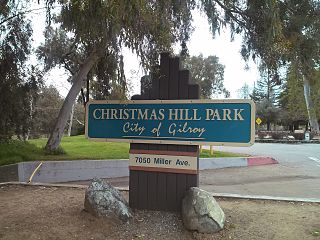
On July 28, 2019, a mass shooting occurred at the Gilroy Garlic Festival in Gilroy, California. The gunman killed three people and wounded 17 others before killing himself after a shootout with responding police officers.
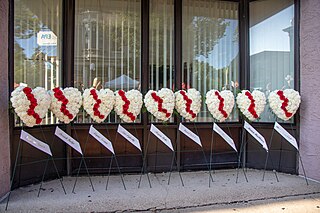
On August 4, 2019, 24-year-old Connor Betts shot and killed nine people, including his transgender brother, and wounded 17 others near the entrance of the Ned Peppers Bar in the Oregon District of Dayton, Ohio. Betts was fatally shot by responding police officers 32 seconds after the first shots were fired. A total of 27 people were taken to area hospitals.
On April 18 and 19, 2020, Gabriel Wortman committed multiple shootings and set fires at 16 locations in the Canadian province of Nova Scotia, killing 22 people and injuring three others before he was shot and killed by the Royal Canadian Mounted Police (RCMP) in Enfield.

On March 22, 2021, a mass shooting occurred at a King Soopers supermarket in Boulder, Colorado, United States. Ten people were killed, including a local on-duty police officer. The alleged shooter, 21-year-old Ahmad Al Aliwi Al-Issa, was arrested after being shot in the right leg. He was temporarily hospitalized before being moved to the county jail. After undergoing mental evaluations during the legal proceedings, Al-Issa was found mentally incompetent to stand trial in December 2021 and in April 2022.

On May 24, 2022, a mass shooting occurred at Robb Elementary School in Uvalde, Texas, United States, where 18-year-old Salvador Ramos, a former student at the school, fatally shot nineteen students and two teachers, and wounded seventeen others. Earlier that day, he shot his grandmother in the face at home, severely wounding her. He fired shots for approximately five minutes outside the school, before entering unobstructed with an AR-15 style rifle through an unlocked side entrance door. He then shut himself inside two adjoining classrooms, without locking the classroom door, killed the victims, and remained in the school for more than an hour before members of the United States Border Patrol Tactical Unit (BORTAC) fatally shot him after they bypassed numerous local and state officers who had been in the school's hallways for over an hour. The shooting is the third-deadliest school shooting in the United States, after the Virginia Tech shooting in 2007 and the Sandy Hook Elementary School shooting in 2012, and the deadliest in Texas. It was the third deadliest shooting in modern Texas history, after the Killeen Luby's shooting and Sutherland Springs shooting, which took place at a diner and church respectively.
On October 24, 2022, a mass shooting occurred at Central Visual and Performing Arts High School in the Southwest Garden section of St. Louis, Missouri, United States. Three people were killed, including the perpetrator, and an additional seven were injured. Authorities identified 19-year-old former student Orlando Harris as the perpetrator.
